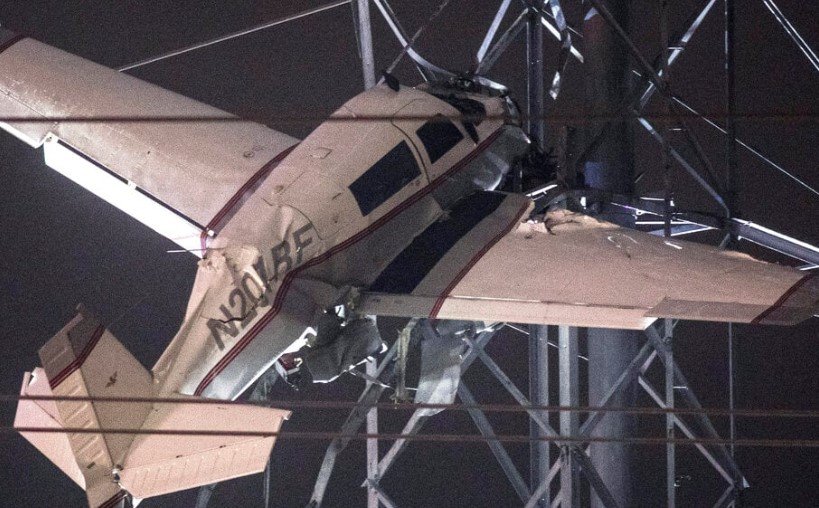A tragic plane crash at the Covington Municipal Airport in Georgia has claimed the lives of at least two individuals. Authorities are investigating the cause, as this event follows a series of devastating aviation accidents across the United States.
At approximately 11:21 p.m. ET on Saturday, the Covington Police Department received a call from the Federal Aviation Administration (FAA) regarding a Rockwell Commander aircraft that had lost communication shortly after taking off from the airport. The small plane had departed around 11:00 p.m. but failed to maintain contact with air traffic control.
Authorities Respond to the Scene
Officers arrived swiftly at the Covington Municipal Airport, located in Newton County, to locate the aircraft. They found the plane just north of the runway, in a wooded area. Tragically, two people were discovered at the crash site and were pronounced dead by emergency responders. No further details have been released regarding the identities of the victims.
In a statement, the Covington Police Department confirmed that the aircraft, a Rockwell Commander, was involved in the crash, and the FAA, along with the National Transportation Safety Board (NTSB), is now investigating the incident. As the search for answers continues, the community mourns the loss of the victims.

What Happened to the Plane?
The Rockwell Commander aircraft was a small, single-engine plane, commonly used for private flights and short-distance travel. It took off from Covington Municipal Airport, but as it ascended into the night sky, communication with the FAA was lost. Local authorities acted quickly upon receiving the report and began searching for the missing plane. They eventually discovered the wreckage in a wooded area to the north of the runway.
The cause of the crash remains under investigation. In situations like this, the NTSB typically examines factors such as mechanical failure, weather conditions, and pilot error to determine the cause. Investigators will likely spend several weeks reviewing evidence and conducting interviews before releasing a detailed report.
A String of Recent Aviation Accidents
This tragedy is just one in a series of aviation accidents that have occurred in the United States over the past several weeks. The frequency of these incidents has sparked concern among both aviation professionals and the public. On January 29, an American Airlines passenger jet collided with a military Black Hawk helicopter near Reagan National Airport in Washington D.C., killing all 67 people on board.
In the days following that disaster, another crash made headlines when a medical air ambulance jet, carrying six people, crashed in Pennsylvania. Tragically, the crash resulted in the deaths of all passengers aboard, as well as a seventh person on the ground. The aircraft exploded shortly after takeoff, engulfing several homes in a fireball.
Just days after that, a small plane, the Bering Air Caravan, disappeared from radar in Alaska, and all 10 people aboard the aircraft were killed. The plane had been on a short commuter flight between small towns in the western part of the state, but it crashed after disappearing from radar over the Norton Sound inlet.
The frequency and severity of these accidents have brought aviation safety into the spotlight. Experts have raised concerns about the increasing number of incidents and are calling for more stringent safety measures to prevent future tragedies.
The Future of Aviation Safety
The series of aviation accidents has prompted many to question the safety standards in the industry. While air travel in the U.S. is generally considered to be safe, these recent incidents highlight the risks involved in flying, especially when it comes to small, private aircraft.
In the wake of these events, aviation safety advocates are urging regulators and manufacturers to reassess safety protocols. Increased inspections of aircraft, better pilot training, and improved communication systems are just a few of the areas that experts believe could help prevent accidents.
Moreover, with technology rapidly advancing, many in the aviation industry are exploring new ways to improve flight safety. Drones and other unmanned aerial vehicles, for instance, are being tested for use in air traffic management. This type of technology could help prevent accidents by providing more precise flight path data and ensuring better coordination between aircraft and ground control.
However, some argue that technology alone may not be enough. Pilot training, maintenance of aircraft, and weather-related factors still play a significant role in ensuring safe flights. Aviation professionals stress that a combination of technology, human expertise, and rigorous safety standards will be essential in reducing the number of accidents in the future.
